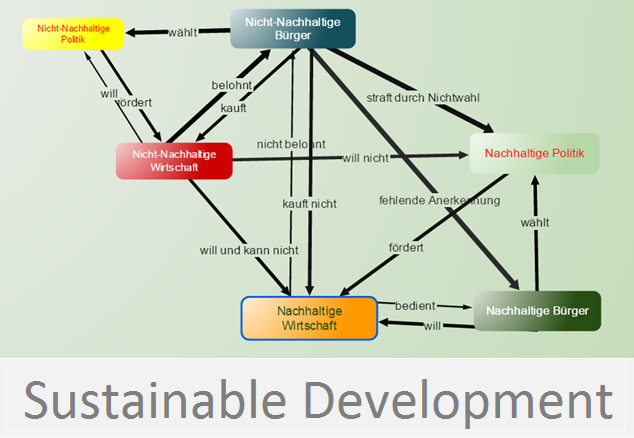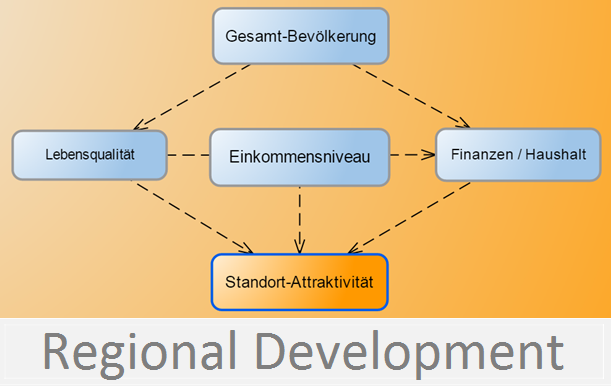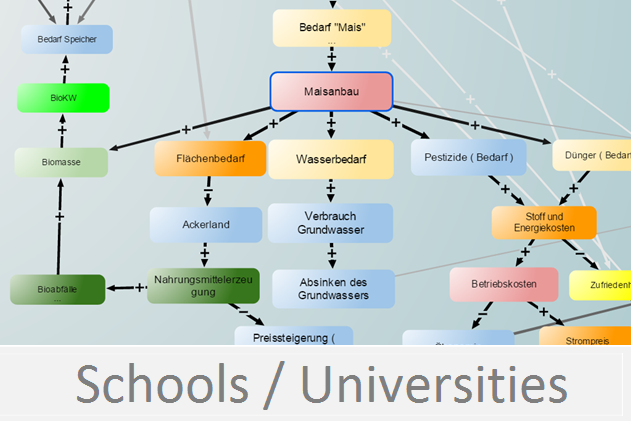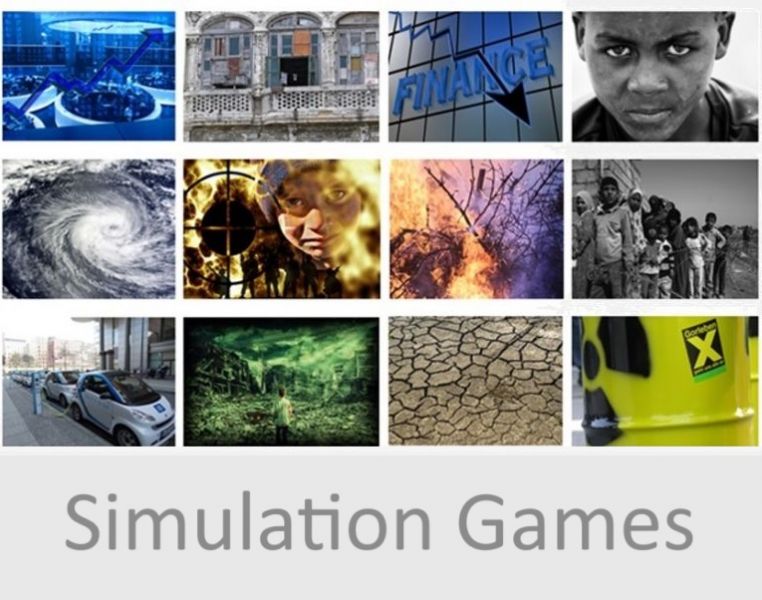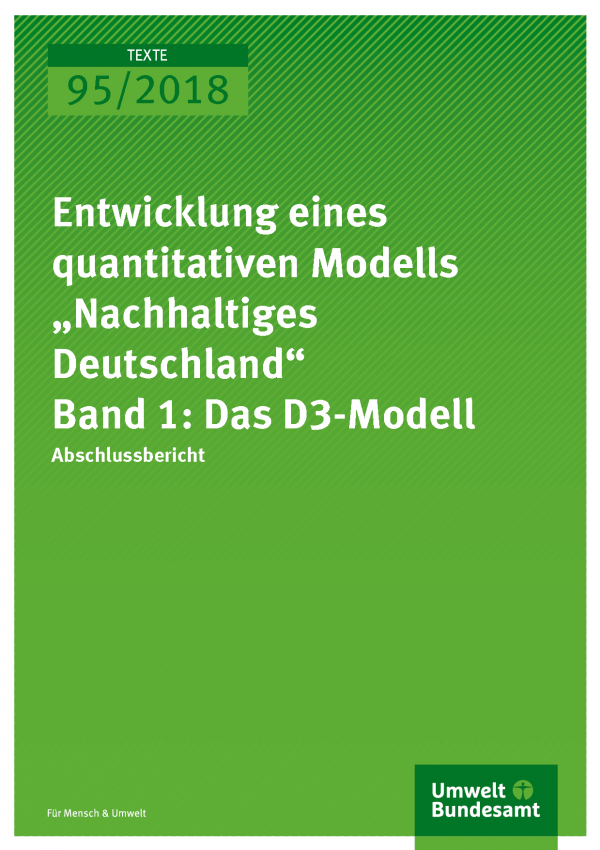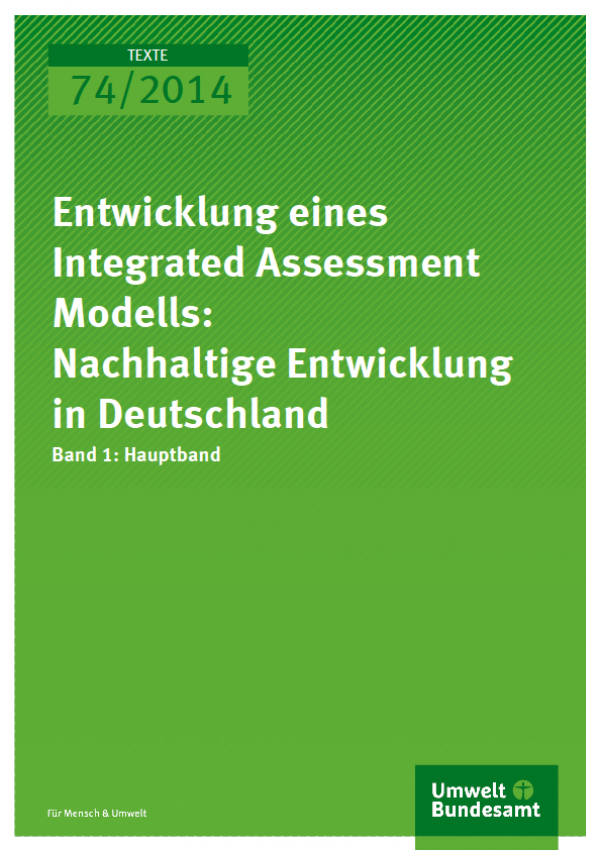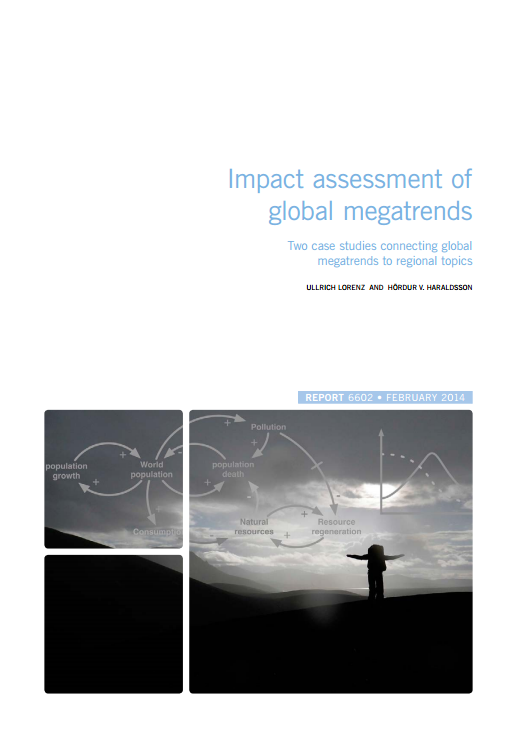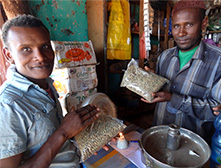Sustainable Development
Below, you will find a small sample of projects. Please ask for more information and other projects.
Identifying and Assessing Interactions between International Climate and Ressource Policy
Funding: Federal Environmental Agency of Germany
Duration: October 2018 - October 2021
Partner: Ecologic Institut gemeinnützige GmbH (Lead-Partner), Consideo GmbH
Abstract:
The project is aiming at the following objectives:
1. Identifying and comparing possible development paths of global resource use and greenhouse gas emissions under different international policy scenarios.
2. Identifying interactions between international or multinational (in particular G7/G20) measures of climate and resource conservation policy and evaluating their climate and resource conservation potential qualitatively and quantitatively.
3. Deriving recommendations for relevant measures on the basis of these evaluations.
In order to achieve these objectives, the project first identifies and qualitatively evaluates essential international measures. Based on the identified measures, potential interactions between the measures are conceptualised and evaluated in a conceptual cause-effect model. The analysis of the interactions and the qualitative cause-effect model form the basis for a quantitative analysis by means of the system-dynamic GEE(R) model, which should enable quantitative statements, e.g. on global resource consumption and global greenhouse gas emissions. The results of these analyses are then processed in short and in-depth studies as well as in policy papers and fact sheets for political communication. In terms of scientific discussion, the results will be presented in webinars, a session during the European Resources Forum ERF 2020 as well as at international conferences and in peer review journals and an international final conference.
Here, you will find more information: Website Ecologic
Development of a quantitative model "Sustainable Germany" - Part 1: The D3 model (Research Report)
Authors: Kai Neumann and Franc Grimm (Consideo GmbH), Hans Diefenbacher (Forschungsstätte der Evangelischen Studiengemeinschaft FEST, Heidelberg), Martin Hirschnitz-Garbers and Susanne Langsdorf (Ecologic Institut, Berlin), Michael Schipperges (sociodimensions GmbH, Heidelberg) and Daniel Weiss (adelphi research)
Published by Umweltbundesamt (Federal Environment Agency of Germany)
Abstract:
For the Federal Environmental Agency of Germany a consortium of Consideo, adelphi, Ecologic Institute, FEST and sociodimensions developed a quantitative simulation model to run scenarios on the potentials for a transition of society towards sustainability. The model explores the effects of a transition on the environment, climate change, use of resources, the economy, welfare and happiness. The results from this project are documented in four parts:
1. The quantitative D3 model (D for Deutschland, 3 for society, economy and politics): The report describes the cause and effect model with its more than 4,000 factors and how it can be used. The Federal Environmental Agency can directly use the model to alter and enhance it and to answer different questions.
2. The simulation of potential transitions towards sustainability and their effects. The report also covers insights on the possibilities and limitations of the simulation of social systems.
3. The simulation of the shift towards renewable energy (D3 EE model): The report describes an additional simulation model that looks more into the details of the use of renewable energy and its implications for the use of resources as well as its economic effects.
4. The D3 simulation: The report describes a separate model that can be used as a simulation game to allow e.g. pupils to play the roles of citizens, politicians, or business-people and experience their interdependencies through the lock-in effect and the spillover effects as they are explained in this report at hand.
The D3 model can be used to generate findings on societal interactions in interplay with increasing technical efficiency, social innovations, eco-sufficiency approaches, and socio-economic effects (e.g. rich/poor, migration, aging societies). The goal was to use the “Sustainable Germany” model to better understand the dynamic interaction between the different aspects of the three dimensions of sustainability “ecology”, ”economy” and “social system”) within the planet’s carrying capacity and, in doing so, to advance our systematic understanding of sustainable development overall.
This report describes the D3 model.
Please ask for further information (info@consideo.de)
![]() Here you will find the publication in german: UBA-Text 95/2018
Here you will find the publication in german: UBA-Text 95/2018
Development of a quantitative model "Sustainable Germany" - Part 2: The D3 simulation results (Research Report)
Authors: Kai Neumann and Franc Grimm (Consideo GmbH), Hans Diefenbacher (Forschungsstätte der Evangelischen Studiengemeinschaft FEST, Heidelberg), Martin Hirschnitz-Garbers and Susanne Langsdorf (Ecologic Institut, Berlin), Michael Schipperges (sociodimensions GmbH, Heidelberg) and Daniel Weiss (adelphi research)
Published by Umweltbundesamt (Federal Environment Agency of Germany)
Abstract:
The project showed that the simulation of social systems with system dynamics is feasible. To endogenously simulate the behavior of humans it is crucial to translate human motivation into factors and formula. Provided that the change of behavior is emotionally effective an exponential transition through spillover effects between different areas (nutrition, mobility, housing, clothing, etc.) for each social milieu as well as spillover effects between the social milieus seems possible. The effects on the environment, climate, resources, welfare and happiness would be beneficial. The effects on the economy could after a medium term increase become stable on today’s level.
Please ask for further information (info@consideo.de)
![]() Here you will find the publication in german: UBA-Text 96/2018
Here you will find the publication in german: UBA-Text 96/2018
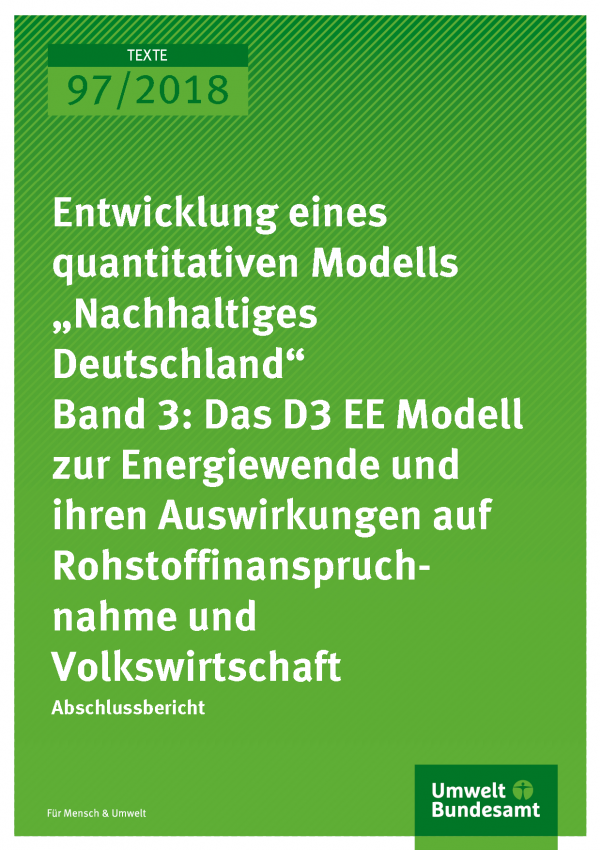 UBA-Text 97/2018
UBA-Text 97/2018
Development of a quantitative model "Sustainable Germany" - Part 3: The D3 EE model (Research Report)
Authors: Kai Neumann and Franc Grimm (Consideo GmbH), Hans Diefenbacher (Forschungsstätte der Evangelischen Studiengemeinschaft FEST, Heidelberg), Martin Hirschnitz-Garbers and Susanne Langsdorf (Ecologic Institut, Berlin), Michael Schipperges (sociodimensions GmbH, Heidelberg) and Daniel Weiss (adelphi research)
Published by Umweltbundesamt (Federal Environment Agency of Germany)
Abstract:
This report describes the D3 EE model that allows for scenarios on paths of energy transition using different technologies (onshore/offshore wind energy, photovoltaic, battery, power to gas/liquid, energy grid) and considering their need for resources with a recycling of older facilities starting 1990 and running on a daily basis until 2050 looking at Germany divided by a its north and south. The objective of the model is less an exact forecast that would have to include the European energy market and rather specific technologies.
The results from three scenarios: the current path will lead to an equilibrium far below 100 percent as the repowering of existing facilities will match the newly added capacities in any scenario with a constant rate of new facilities. Crucial in all scenarios reaching 100 percent renewable electricity seems to be the availability of power to liquid/gas capacities. The third scenario on the least resource consumption of possible paths to renewable energy already shows with only rough data that any path should be developed as fast as possible as the resource use for conventional energy seems to outweigh any need of resources from renewables.
For the economical evaluation of the transition towards renewable energy is not based on markets but instead compares the margin costs of conventional sources for electric energy with the investments into renewables. It shows that while the price for electricity would certainly rise the overall costs for energy including the mobility sector would be lower. From an economical point of view the outcome of the transition would be extremely positive as the investments into renewables would foster the domestic economy to a larger part while little money would return through exports from countries we have to pay for the delivery of fossil resources for conventional energy.
The model can now be used to extended scenarios, e.g. on possible developments of technology, additional demands for electricity from other fields etc..
Please ask for further information (info@consideo.de)
![]() Here you will find the publication in german: UBA-Text 97/2018
Here you will find the publication in german: UBA-Text 97/2018
 UBA-Text 98/2018
UBA-Text 98/2018
Development of a quantitative model "Sustainable Germany" - Part 4: The D3 simulation game (Research Report)
Authors: Kai Neumann and Franc Grimm (Consideo GmbH), Hans Diefenbacher (Forschungsstätte der Evangelischen Studiengemeinschaft FEST, Heidelberg), Martin Hirschnitz-Garbers and Susanne Langsdorf (Ecologic Institut, Berlin), Michael Schipperges (sociodimensions GmbH, Heidelberg) and Daniel Weiss (adelphi research)
Published by Umweltbundesamt (Federal Environment Agency of Germany)
Abstract:
This report describes the D3 simulation game and how it is played. The game shows its players that there is a so-called lock-in effect between politics, business and population and that we need to know the consequences of our actions in order to emotionally experience self efficiency as a basis for the socalled spillover effects.
Please ask for further information (info@consideo.de)
![]() Here you will find the publication in german: UBA-Text 98/2018
Here you will find the publication in german: UBA-Text 98/2018
Development of an Integrated Assessment Model: Sustainable Development in Germany
Authors: Kai Neumann, Franc Grimm, Prof. Harald Heinrichs
Published by Umweltbundesamt (Federal Environment Agency of Germany)
Abstract: Sustainability has a social, economical and ecological dimension. These dimensions are highly interconnected and interdependent. Despite tremendous knowledge about the different fields and the severe pressure from social, increasingly economic and above all ecological developments there is little, if any progress on our way to a sustainable society. To get a deeper understanding of the underlying reasons this work is based on a systemic, explorative, qualitative cause and effect model build together with a series of experts and stakeholders from different fields. From its analysis stem a number of crucial insights: Any player could address Biopsychological motives of human behavior in order to foster feedback loops that could form a transformation towards more sustainability. Currently, these feedback loops describe a lock-in situation that prevents any change. An additional measure could be an intelligent scoring system to address the human motives. Also effective would be to make the basic background knowledge common as a basis for a public vision to manifest the change. Until change has developed its momentum any player should provide basic background knowledge, a vision, a way to score the alternative that is provided and hence make change emotionally effective.
This projects has been carried out by Consideo for the Federal Environment Agency of Germany (Umweltbundesamt)
Please ask for further information (info@consideo.de)
![]() Here you will find the publication in german: UBA-Text 74/2014
Here you will find the publication in german: UBA-Text 74/2014
Impact assessment of global megatrends - two case studies connecting global megatrends to regional topics
Authors: Ullrich Lorenz and Hördur Haraldsson
Published by SWEDISH ENVIRONMENTAL PROTECTION AGENCY
Abstract: This work and report was inspired by the work the authors did on a project funded by the EEA (European Environment Agency) that ran between June 2011 and March 2012. One of the main aims of the EEA project was to provide examples of how the evaluation of global mega trends presented in the SOER 2010 could be applied to regional topics, like resource scarcity or environmental goals. The authors have extensive experience in systems thinking and systems dynamic modelling techniques and immediately saw the huge potential for applying Qualitative Modelling (causal loop analysis).
This report gives an overview how global megatrends can influence topics on regional and local level. The report demonstrates how qualitative modelling and system thinking approach can be applied to analyse the possible impact of global megatrends to the regional topic of resource scarcity, demonstrated in two case studies. In the first case study, a generic qualitative model is developed to explain a general pattern of resource scarcity on a EU regional scale. Typical entry points of political measures are shown as well as how the eleven global megatrends – described by the European Environment Agency – can be connected to such a model. Potentially, some of the global megatrends will increase the problem of resource scarcity while others will put relieve on the challenge. A third group of megatrends has apparently now impact on the resource scarcity pattern. In the same way, the possible impact of the policy measure can be compared. In the second case study, a qualitative model is built to explain the impact of the global megatrends upon the Swedish environmental goals. The case study illustrates how the different scales: local, EU regional and the global scale connect through the megatrends, and how they impact the possibility of fulfilling the Swedish environmental goals. In conclusion, we are able to demonstrate that the global megatrends put in nearly all cases more burden to environmental challenges respectively the environmental goals. The potential impact of global megatrends differs in time and spatial scale. Generally, the methodology of qualitative modelling has proven to be a powerful approach to assess the potential impact of global megatrends to regional or concrete topics as well as to assess the potential impact of policy measures in terms of goal reaching.
![]() Here you will find the publication in english: SWEDISH ENVIRONMENTAL PROTECTION AGENCY REPORT 6602
Here you will find the publication in english: SWEDISH ENVIRONMENTAL PROTECTION AGENCY REPORT 6602
BiomassWeb - Improving food security in Africa through increased system productivity of biomass-based value webs
With BiomassWeb, we aim to provide concepts to increase the availability of and access to food in Sub-Saharan Africa through more and higher-value biomass for food and non-food purposes in the next decades. We identify biomass-based value webs and study selected entry points to increase the overall system productivity. We are seeking exemplary agronomic, technological and institutional innovations in production, processing, and utilization of biomass-based goods.
Through our work, we address the three pillars of food security, i.e. food availability, through enhanced biomass productivity; access to food, through income generation from non-food biomass production, processing and trading; and use of food, through increasing nutritional quality.
BiomassWeb expects to contribute to enhancing the capacity of Africa to participate in the emerging regional and international bioeconomy. BiomassWeb intends to strengthen existing African expertise and add value to African agricultural efforts rather than to offer and transfer ready-made solutions to the African biomass-producing, processing and trading sector. Therefore, we integrate innovation system approaches, stakeholder participation, and demand-driven research and development activities.
Our BiomassWeb research group involves 9 institutes from three German universities and research facilities, 14 African and international research institutions as well as partners from the private sector.
To understand biomass-based value webs as systems, these systems need to be modeled and analyzed by using Systems Thinking. Systems Thinking is the process of understanding how things influence each other within a whole system.
You will find more information about the project on the BiomassWeb-Website.

